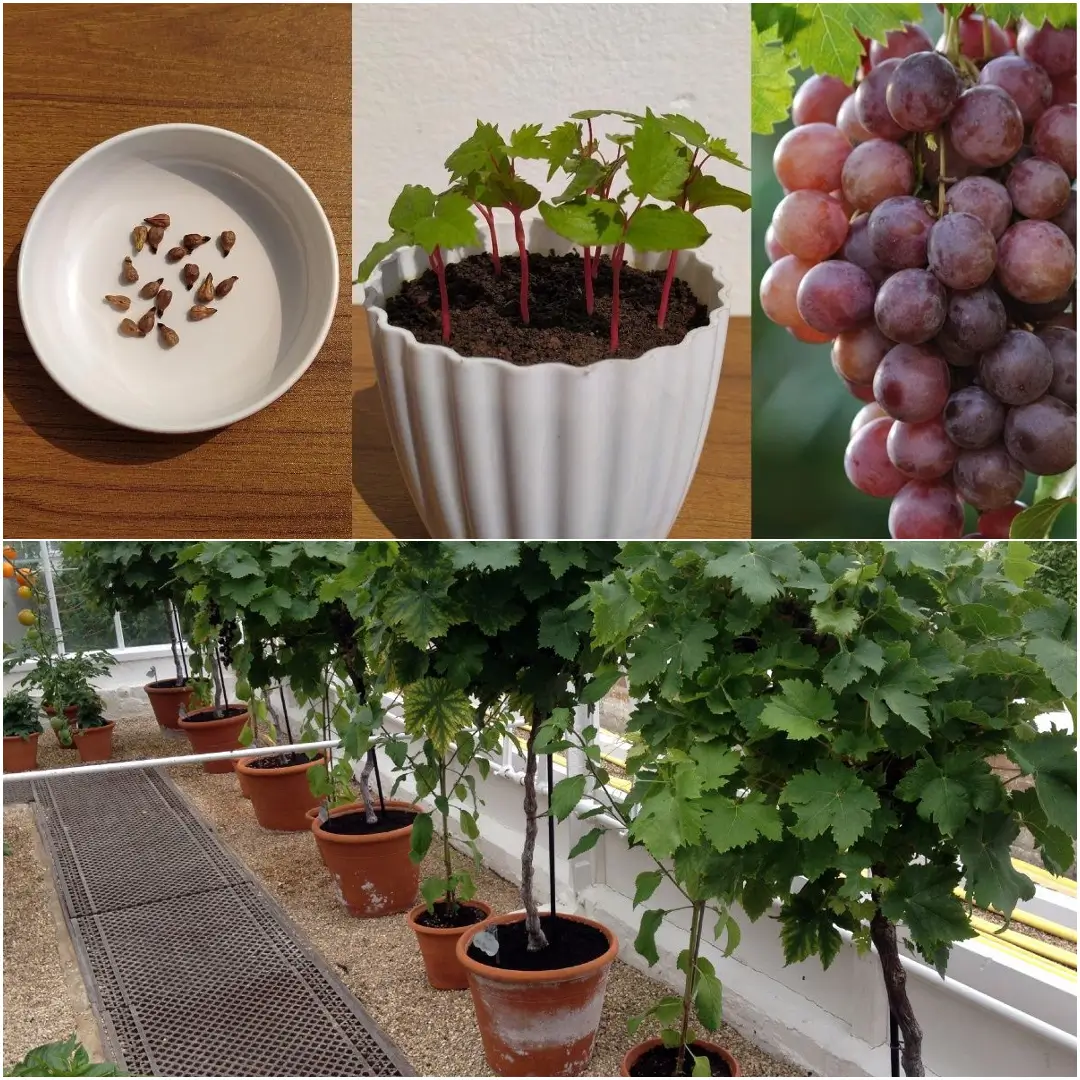Have you ever dreamed of strolling through your backyard, plucking sun-warmed, juicy grapes straight from the vine? If so, you’re in for a treat! Growing grapes is not only a rewarding endeavor but also surprisingly simple when you know what to do. In this article, we’ll walk through five easy steps to help you grow your own delicious grapes. Let’s get started!
1. Find the Best Place to Plant Your Grapes
Finding the perfect spot for your grapevines is crucial to their success. Think of this as the foundation for your grape-growing adventure!
Space and Sunlight Requirements
You need a large, sunny space—about 50 to 100 square feet per vine if you’re growing them vertically. If you prefer a more traditional horizontal setup, make sure to leave 8 feet between rows. Grapes are sun-lovers, so aim for 7 to 8 hours of direct sunlight each day. This isn’t just a suggestion; it’s a recipe for juicy grapes!
Soil Quality
Grapes thrive in well-drained, rich, organic soil. Picture your grapes with their roots comfortably resting in nutrient-packed earth. Remember, grapes can’t stand “wet feet,” meaning they don’t like sitting in water. If your soil isn’t ideal, don’t worry—mix in ample compost or soil conditioner to boost its quality.
Air Circulation
Good air circulation is essential. Think of it like giving your grapes a breath of fresh air! This helps prevent fungal diseases, such as powdery mildew, which can ruin your harvest. Place your vines with enough space around them, allowing air to flow freely.
2. Choose the Best Grape Variety for Your Climate
Now that you’ve picked the perfect spot, it’s time to choose the right grape variety. Not all grapes are created equal, and selecting the right one can make all the difference!
Understanding Grape Types
There are three basic types of grapes to consider:
American Grapes (Vitis labrusca)
These grapes are cold-hardy and thrive in USDA zones 4-7. They’re fantastic for table grapes, juices, and jellies. If you live in a cooler area, this is the grape for you!
European Grapes (Vitis vinifera)
If you’re in a warm, dry climate (zones 7-10), these grapes are your best bet. They’re commonly used for winemaking and can also serve as delicious table grapes.
Muscadine Grapes (Vitis rotundifolia)
Native to North America, Muscadine grapes love the humid Southern climate (zones 7-9). These grapes are often used for both winemaking and table enjoyment.
Consult Your Local Garden Center
Choosing the right variety according to your USDA zone is key. Don’t hesitate to ask your local Independent Garden Center for advice on the best varieties for your area. They’re the grape experts!
3. Properly Plant Your New Grape Vine
With your spot picked and grape variety chosen, it’s time to get your hands dirty!
Support Systems
When it comes to support, table grapes don’t need anything fancy—just some minimal support. But wine grapes? They’ll need a sturdy horizontal structure to support their growth.
When to Plant
Timing matters! If you live in a mild winter area (USDA Zone 7 and warmer), you can plant your grapevines in early winter. In colder regions, wait for early spring to avoid frost damage.
Digging the Hole
Dig a planting hole that’s about two feet deep and wide. This gives your grapevines plenty of room to establish deep roots—sometimes up to 15 feet! Enrich the hole with compost to ensure your vines start off strong.
How Many Vines to Plant?
Consider how many grapevines you want based on your desired yield. Mature table grapevines can produce 15 to 30 pounds of grapes, while wine grapes yield about 12 pounds. If you’re serious about winemaking, you’ll need to plant quite a few vines!
4. Maintain and Prune Your Grapevines
Once your grapevines are in the ground, the fun really begins! Keeping them healthy involves some TLC and regular maintenance.
The Importance of Pruning
Pruning is vital for grapevines. They produce fruit on one-year-old growth, so keeping a pruning schedule is essential. Don’t make the common mistake of not pruning hard enough. You may actually end up cutting off more than you leave behind!
Pruning Styles
There are a couple of different ways to train your grapevines, depending on your goals:
Vineyard Style
This classic method uses two wires strung between posts, making harvesting a breeze. It only requires a narrow space, like along a fence or wall, and has one central trunk with one-year-old canes.
Trellis or Pergola
Want to make your garden look beautiful? Train your grapes onto a trellis or pergola! This method provides shade and a lovely spot to enjoy your grapes.
When to Prune
Prune your grapevines in late winter or early spring. After pruning, ensure that only the permanent main trunk or trunks and one-year-old growth remain. If you notice any old wood, it’s time to say goodbye!
Common Maintenance Challenges
Be on the lookout for powdery mildew, the most common disease affecting grapes. Improve air circulation and consider regular spraying in the spring to keep it at bay. And if birds become a problem, netting can be your best friend!
5. Occasionally Feed Your Grapes
Just like you and me, grapes need some nourishment to thrive, but don’t overdo it!
Fertilizing
Grapevines don’t require much fertilizer. A light application in early spring of about 8-10 ounces of a balanced fertilizer (like 10-10-10 or 10-20-20) is usually sufficient. Additionally, adding a layer of high-quality compost at the base can work wonders for their health.
Harvesting Your Grapes
When your grapes are ripe, it’s time to reap the rewards! The best way to know if they’re ready is to taste a few. Harvesting involves clipping full clusters off the vine using pruning shears. Handle them with care to prevent bruising.
Growing grapes in your backyard is an incredibly rewarding journey that begins with a little planning and a lot of love. By finding the right spot, choosing the best variety, planting properly, maintaining your vines, and feeding them sparingly, you can enjoy the fruits of your labor in no time. So, roll up your sleeves, get your gardening gloves on, and start your grape-growing adventure today! Before you know it, you’ll be enjoying your very own delicious, homegrown grapes. Cheers to that!
FAQs
How long does it take to grow grapes?
Typically, you can expect to harvest grapes about three to four years after planting your vines. This timeline can vary depending on the grape variety and local growing conditions.
Can I grow grapes in the UK?
Yes, you can grow grapes in the UK! Many grape varieties, especially hardy American and some European types, thrive in the UK’s climate, particularly in southern regions with milder winters.
How do you start grapes from vines?
To start grapes from vines, you can take cuttings from healthy, established plants. These should be about 6-8 inches long and taken in the winter. Plant them in well-draining soil and keep them moist until they establish roots.
Where do grapes grow best?
Grapes grow best in areas with full sun, well-drained soil, and good air circulation. Ideal climates include regions with warm summers and moderate winters, such as Mediterranean-like climates.


